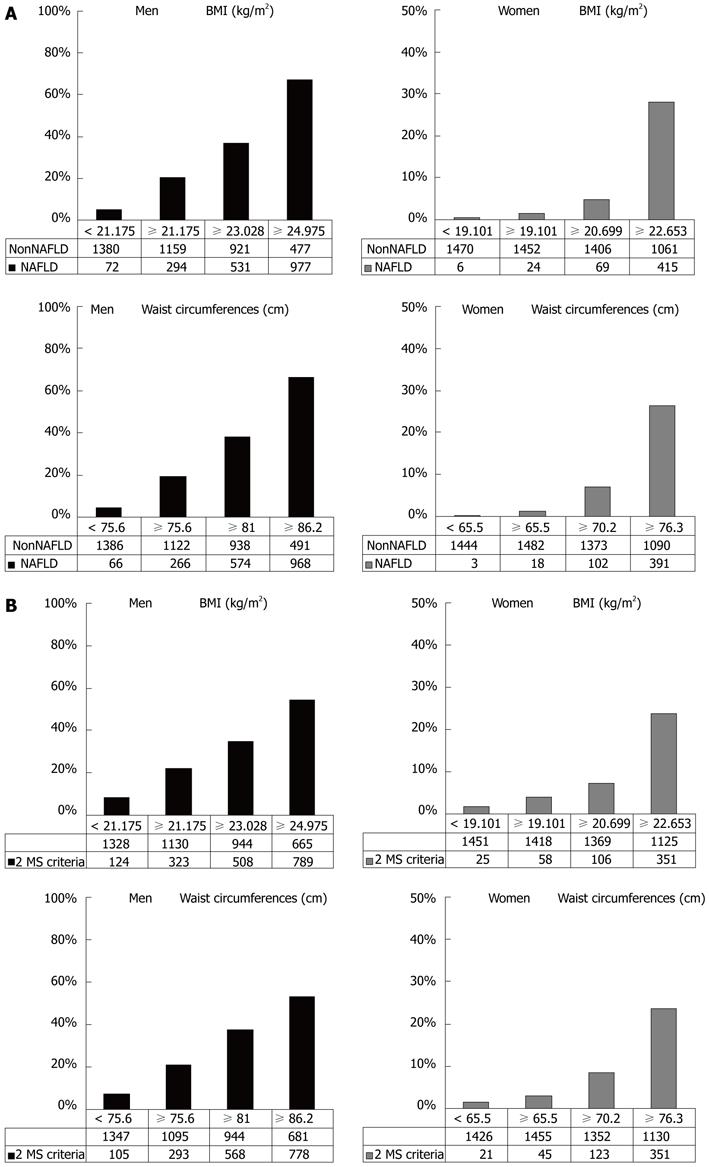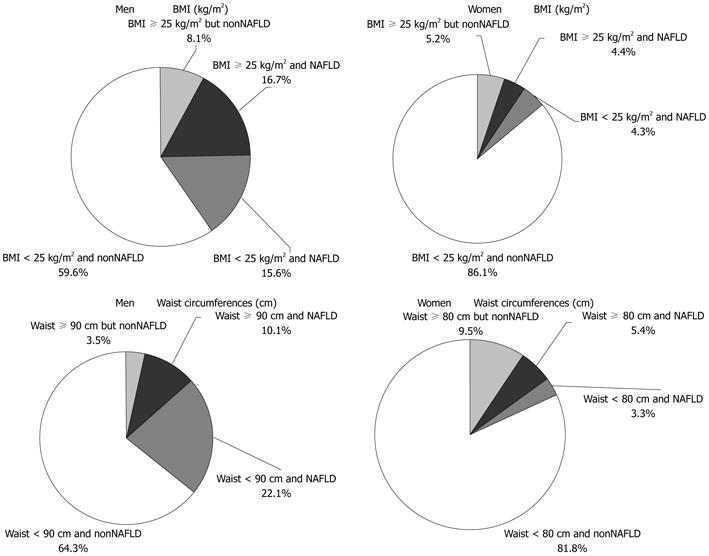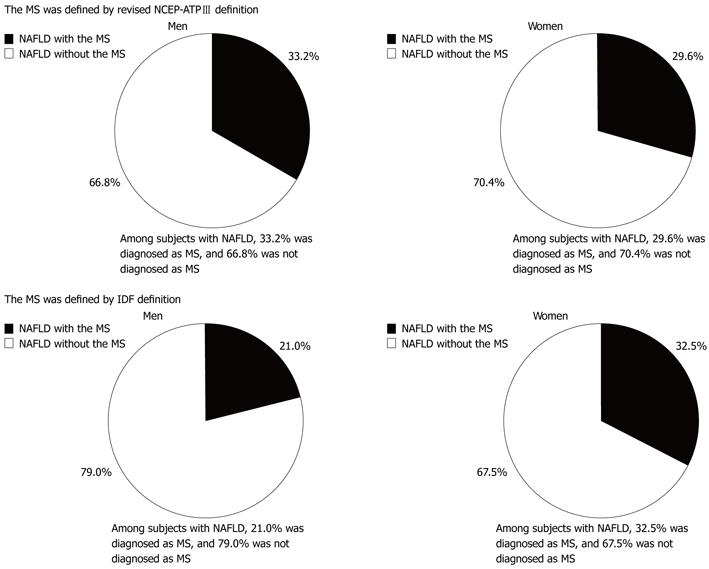Copyright
©2012 Baishideng Publishing Group Co.
World J Gastroenterol. Apr 7, 2012; 18(13): 1508-1516
Published online Apr 7, 2012. doi: 10.3748/wjg.v18.i13.1508
Published online Apr 7, 2012. doi: 10.3748/wjg.v18.i13.1508
Figure 1 We separated the subjects by quartile according to their body mass index or abdominal circumference.
A: The bar indicated the prevalence (%) of individuals with NAFLD; B: Individuals who meet two or more of the MS criteria other than waist circumference according to BMI or waist circumference quartiles. 2 MS criteria means individuals who meets two or more of the MS criteria other than waist circumference. NAFLD: Nonalcoholic fatty liver disease; BMI: Body mass index; MS: Metabolic syndrome.
Figure 2 This figure indicates the prevalence of non-alcoholic fatty liver disease and alcoholic fatty liver disease with or without patients being overweight (BMI ≥ 25 kg/m2) or having elevated abdominal circumferences (≥ 90 cm for men and ≥ 80 cm for women).
Data was expressed as prevalence (%). NAFLD accompanied with being overweight occurred in 51.8% of NAFLD men (970/1874) and 50.2% of NAFLD women (258/514). NAFLD accompanied by elevated abdominal circumference occurred in 31.4% of NAFLD men (588/1874) and 62.1% of women (319/514). NAFLD: Non-alcoholic fatty liver disease; BMI: Body mass index.
Figure 3 The prevalence of subjects with or without the metabolic syndrome among 1874 men and 514 women with non-alcoholic fatty liver disease.
Data was expressed as prevalence (%). The metabolic syndrome (MS) was diagnosed using revised IDF. Among men with NAFLD, 66.8% and 79.0% were not diagnosed with the MS defined by revised NCEP-ATPIII definition and revised IDF definition, respectively. In women, 70.4% and 67.5%, respectively, were not diagnosed with the MS by revised NCEP-ATPIII definition and revised IDF definition. IDF: International Diabetes Federation; NCEP-ATPIII: National Cholesterol Education Program Adult Treatment Panel III; NAFLD: Non-alcoholic fatty liver disease.
- Citation: Hamaguchi M, Takeda N, Kojima T, Ohbora A, Kato T, Sarui H, Fukui M, Nagata C, Takeda J. Identification of individuals with non-alcoholic fatty liver disease by the diagnostic criteria for the metabolic syndrome. World J Gastroenterol 2012; 18(13): 1508-1516
- URL: https://www.wjgnet.com/1007-9327/full/v18/i13/1508.htm
- DOI: https://dx.doi.org/10.3748/wjg.v18.i13.1508











